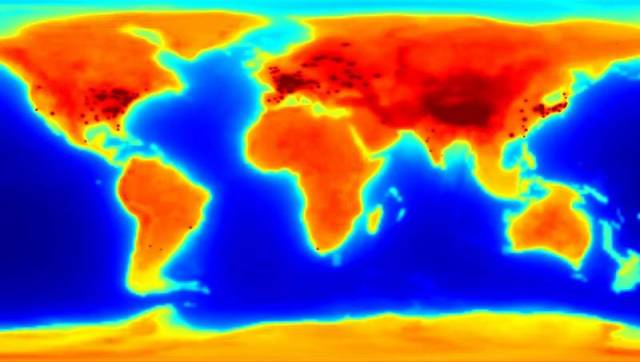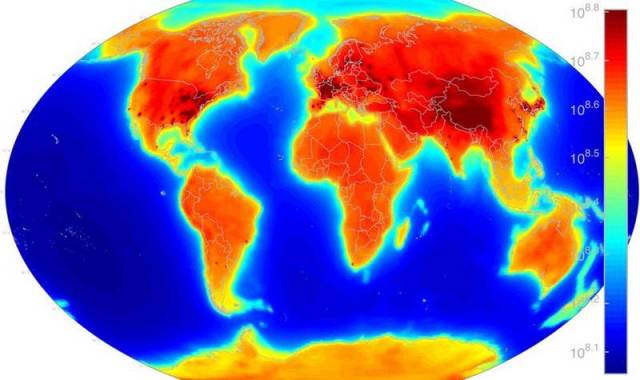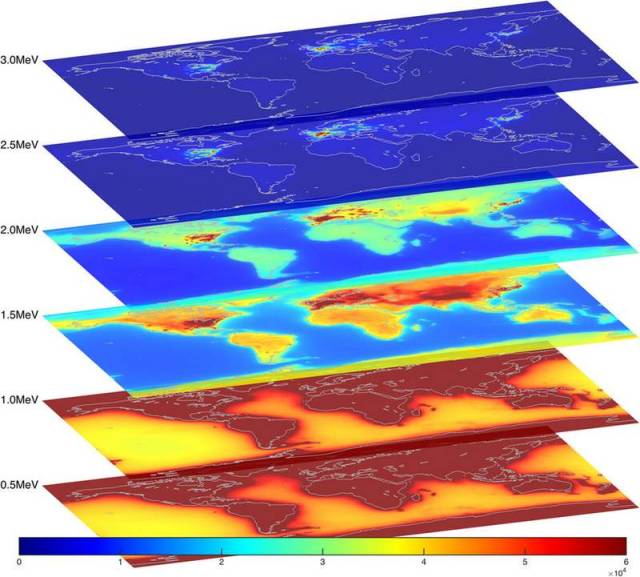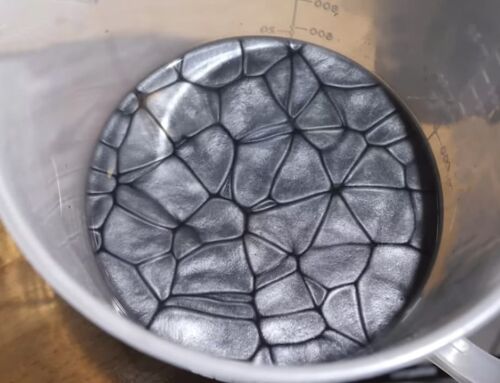The first global map of subatomic particles called antineutrino, of natural and human-made sources. Credit: National Geospatial-Intelligence Agency/AGM2015
Geologists and physicists has created the first global map of antineutrino emissions, published online in the journal Scientific Reports on September 1, 2015. The map provides an image of the energy budget of Earth’s interior.
The neutrino and its cousin the antineutrino, are the smallest known particles.
William McDonough, professor of geology at UMD and a co-author of the study, said:
“The interior of Earth is quite difficult to see, even with modern technology. Locating the activity of antineutrinos allows us to create images that our predecessors had only dreamed of. This map should prove particularly useful for future studies of processes within the lower crust and mantle.”
This global glowing map combining geoneutrinos from natural 238U and 232Th decay in the Earth’s crust and mantle as well as manmade reactor- emitted by power reactors worldwide. Credit AGM2015: Antineutrino Global Map 2015
A neutrino (/nuːˈtriːnoʊ/ or /njuːˈtriːnoʊ/, in Italian
Antineutrinos, the antiparticles of neutrinos, are neutral particles produced in nuclear beta decay. These are emitted during beta particle emissions, in which a neutron decays into a proton, electron, and antineutrino. They have a spin of ½, and are part of the lepton family of particles. All antineutrinos observed thus far possess right-handed helicity (i.e. only one of the two possible spin states has ever been seen), while neutrinos are left-handed. Antineutrinos, like neutrinos, interact with other matter only through the gravitational and weak forces, making them very difficult to detect experimentally. Neutrino oscillation experiments indicate that antineutrinos have mass, but beta decay experiments constrain that mass to be very small. A neutrino–antineutrino interaction has been suggested in attempts to form a composite photon with the neutrino theory of light.
AGM2015 flux (/cm2/s/keV) displayed at 6 select energy bins out of the 1100 total AGM2015 energy bins, which uniformly span the 0 MeV–11 MeV energy range. Credit AGM2015: Antineutrino Global Map 2015
via gizmodo








Leave A Comment